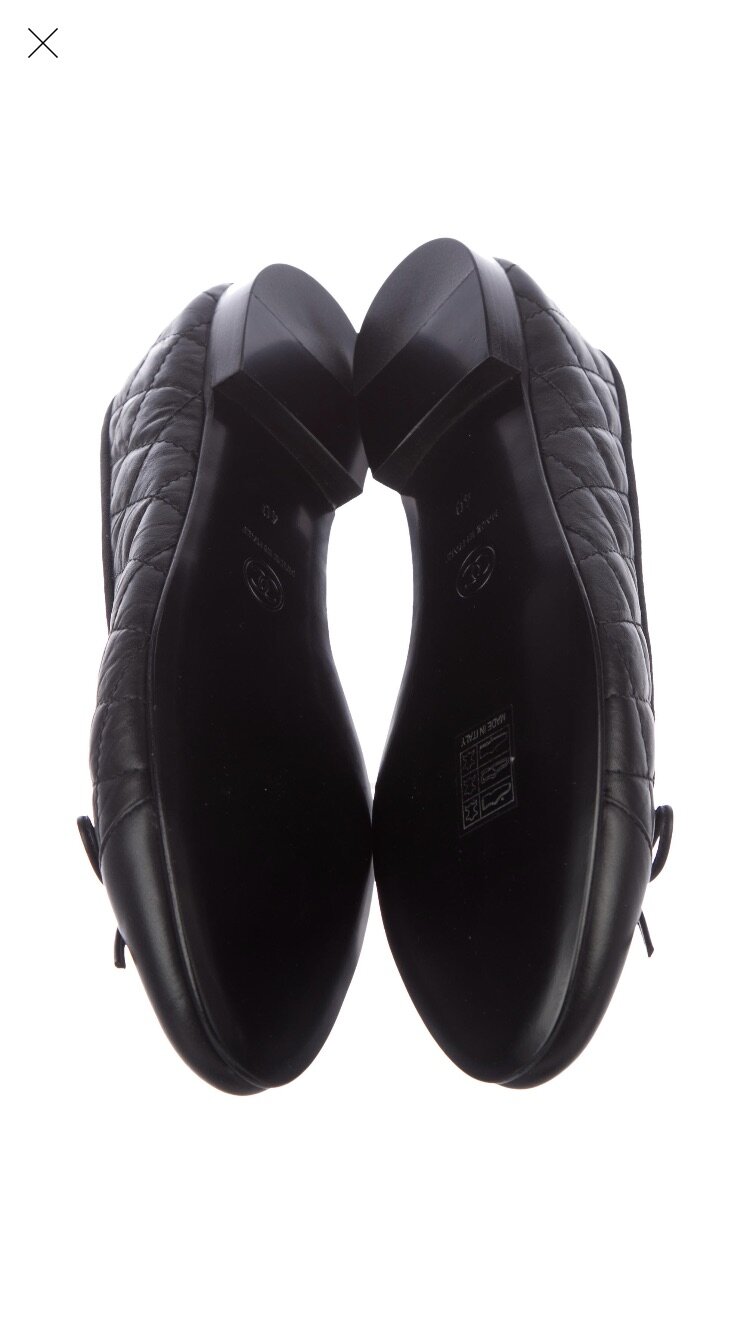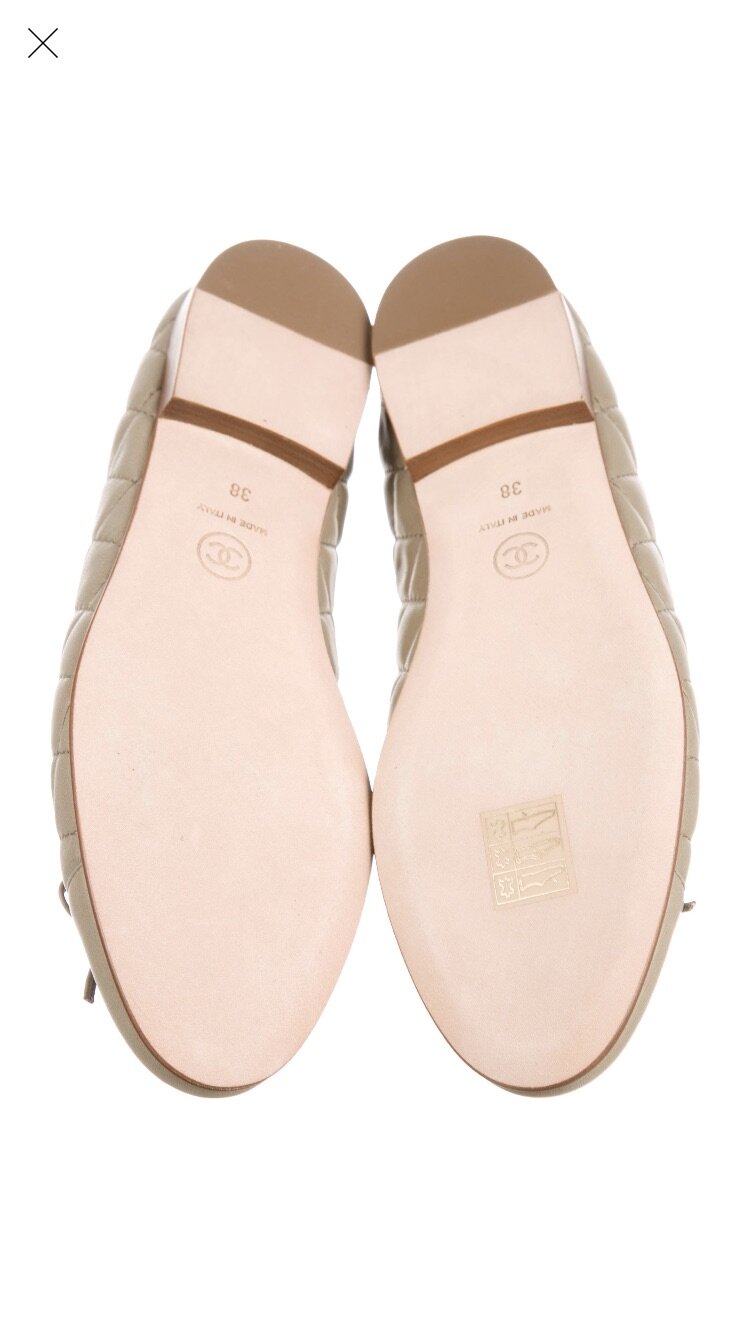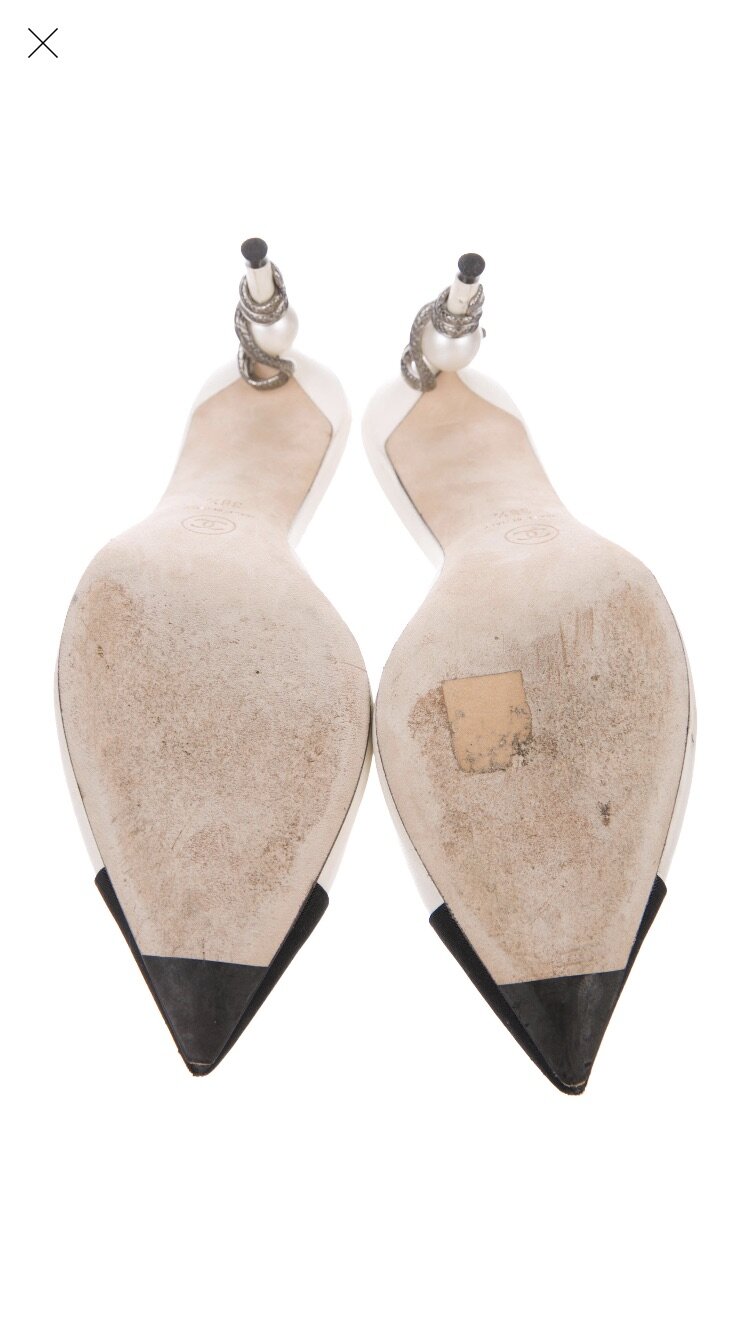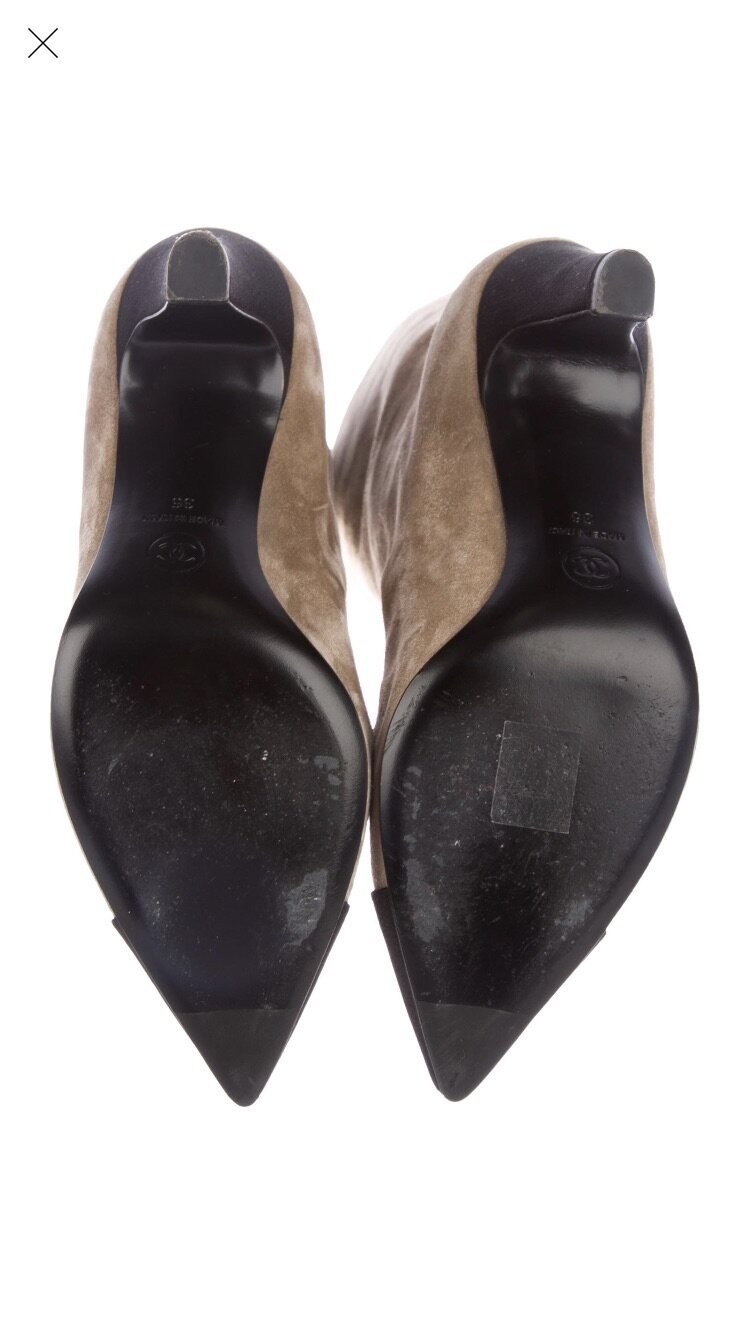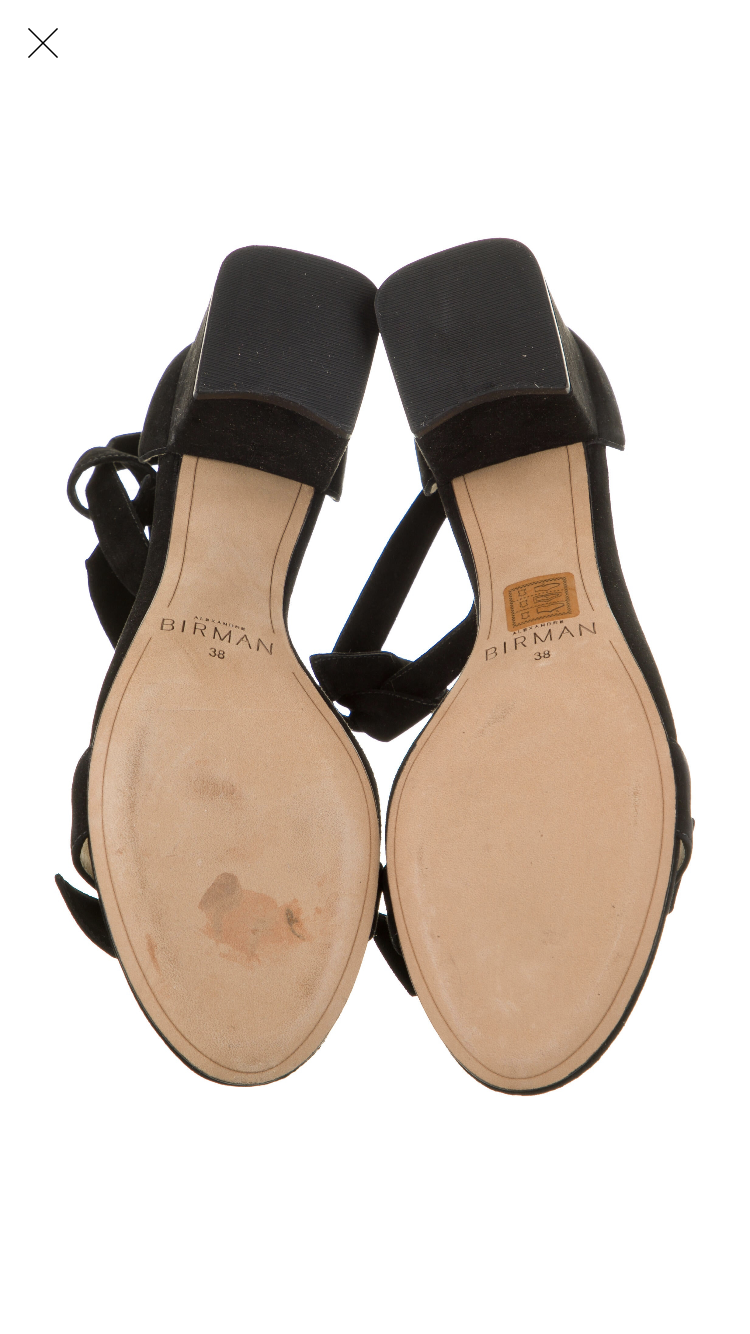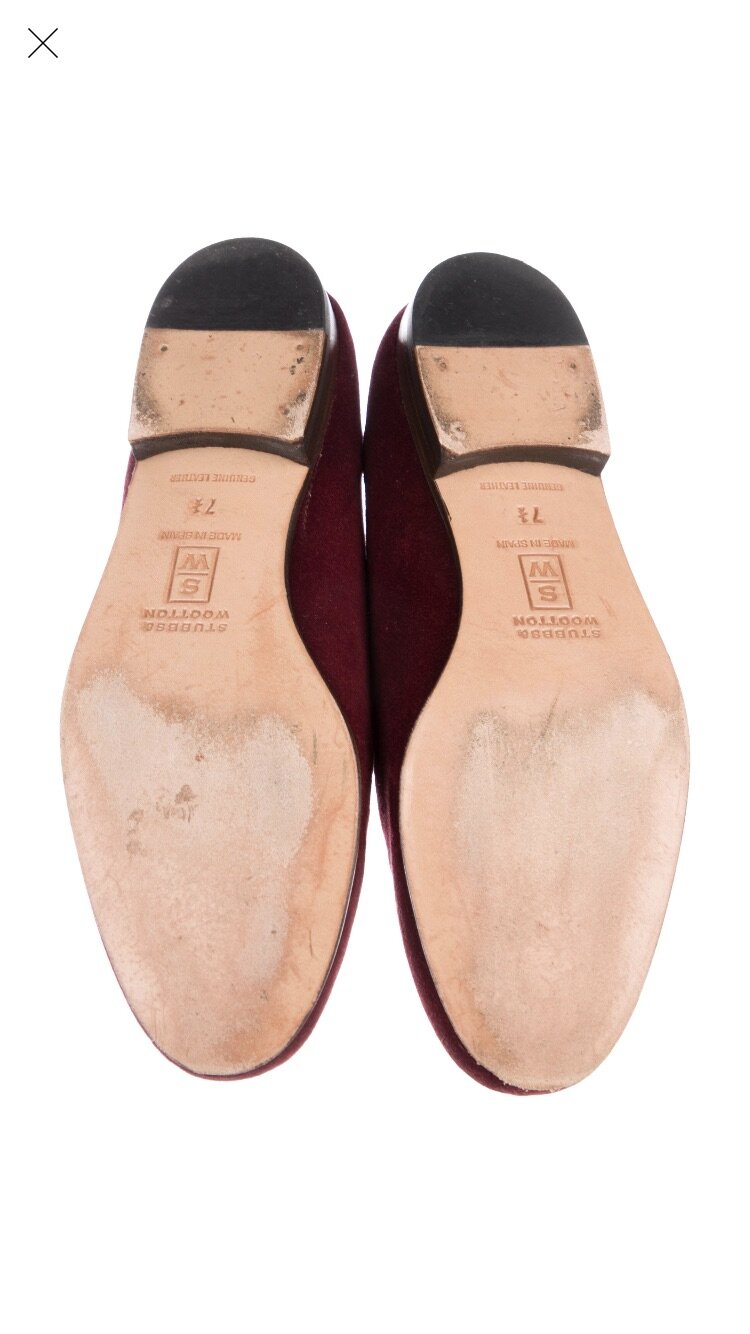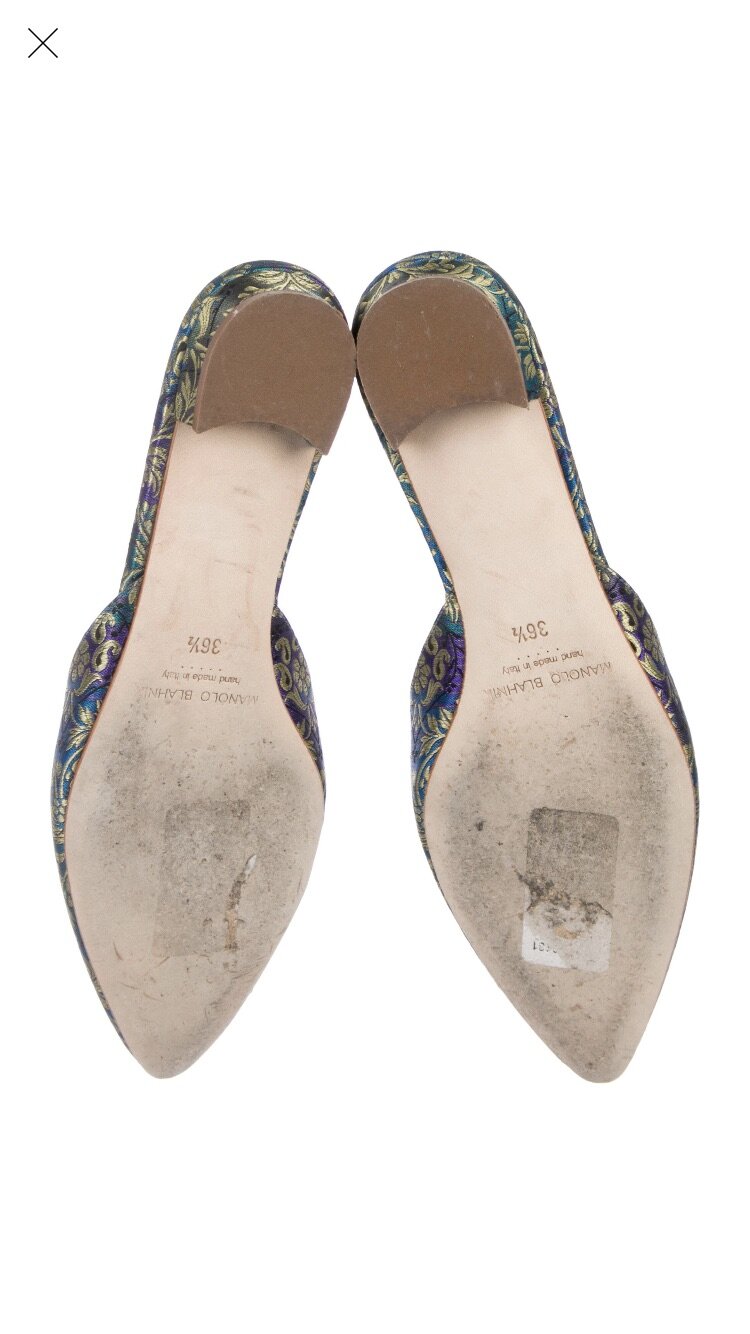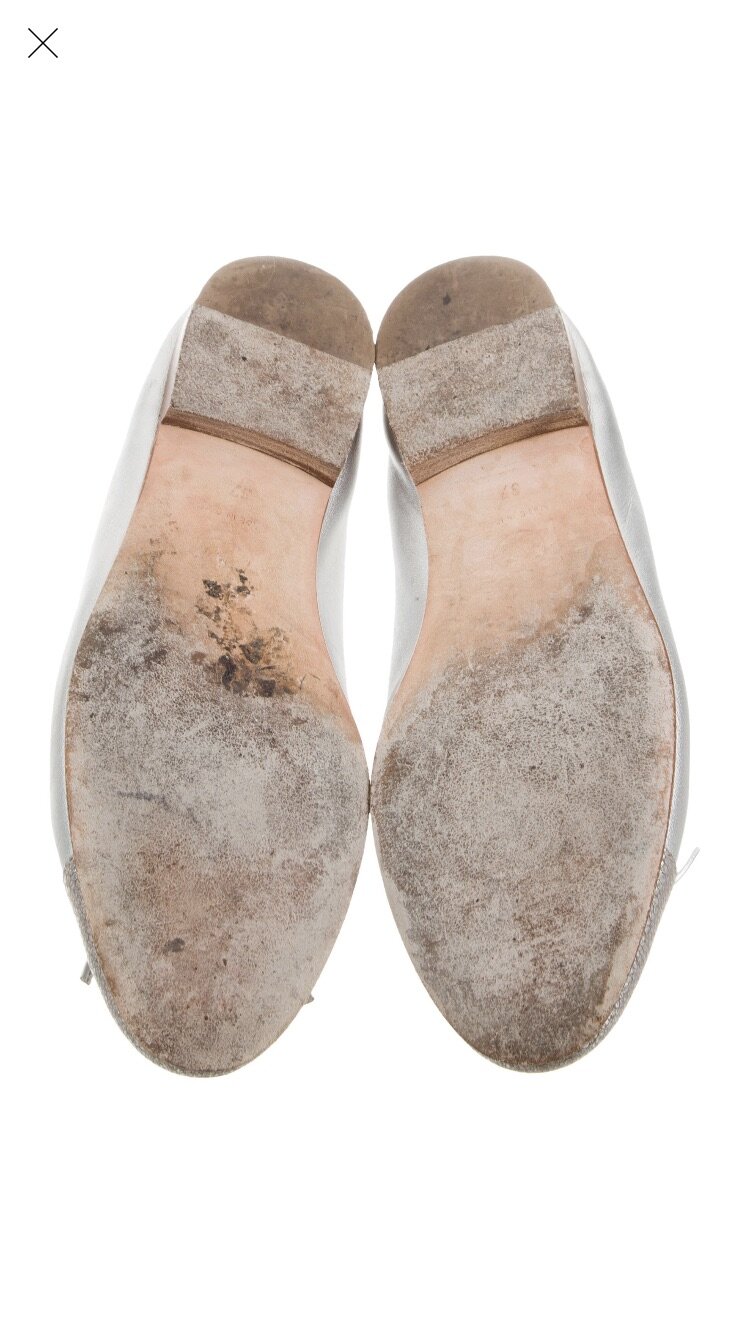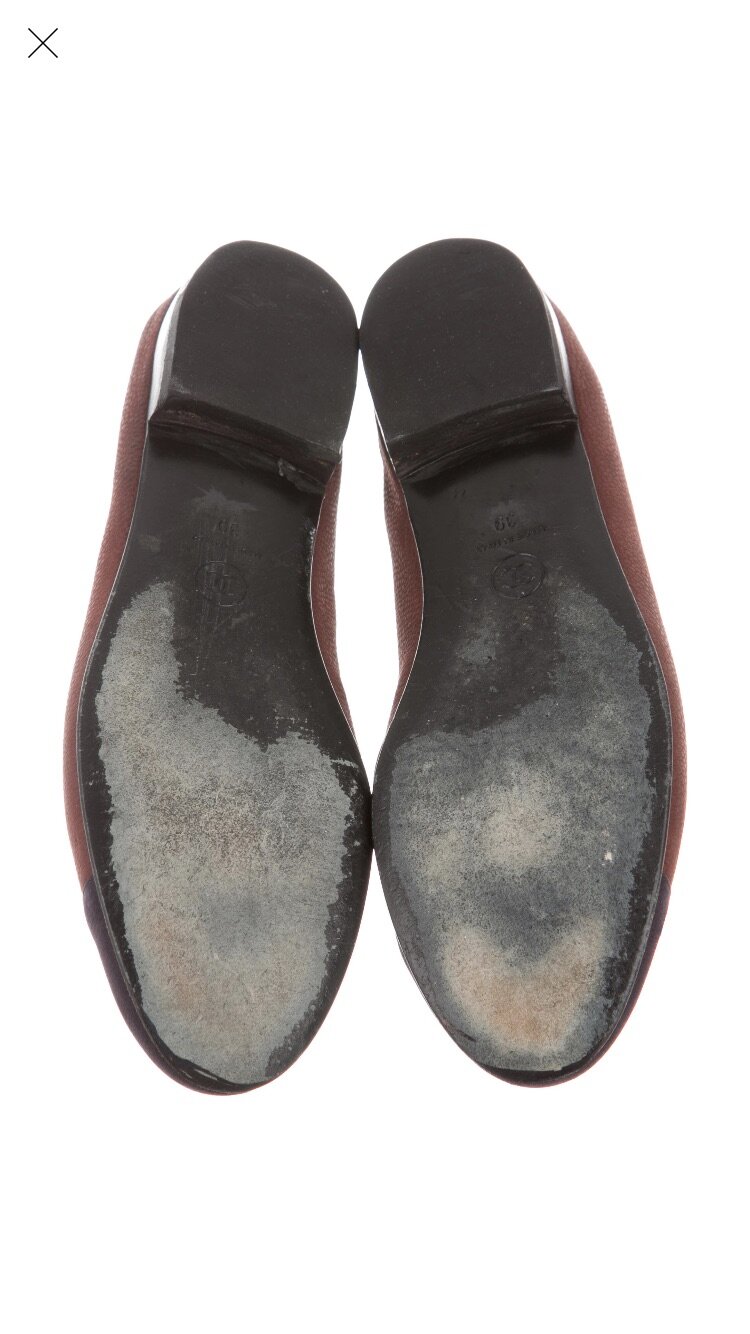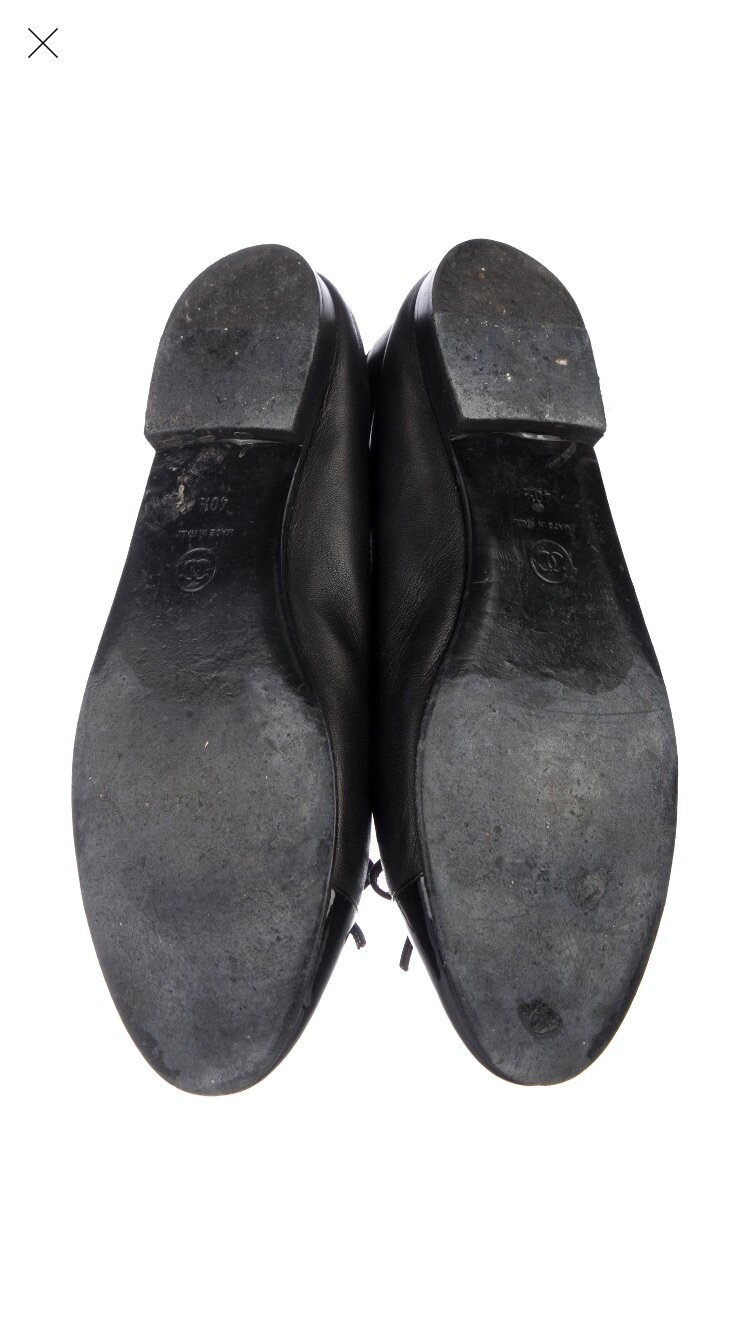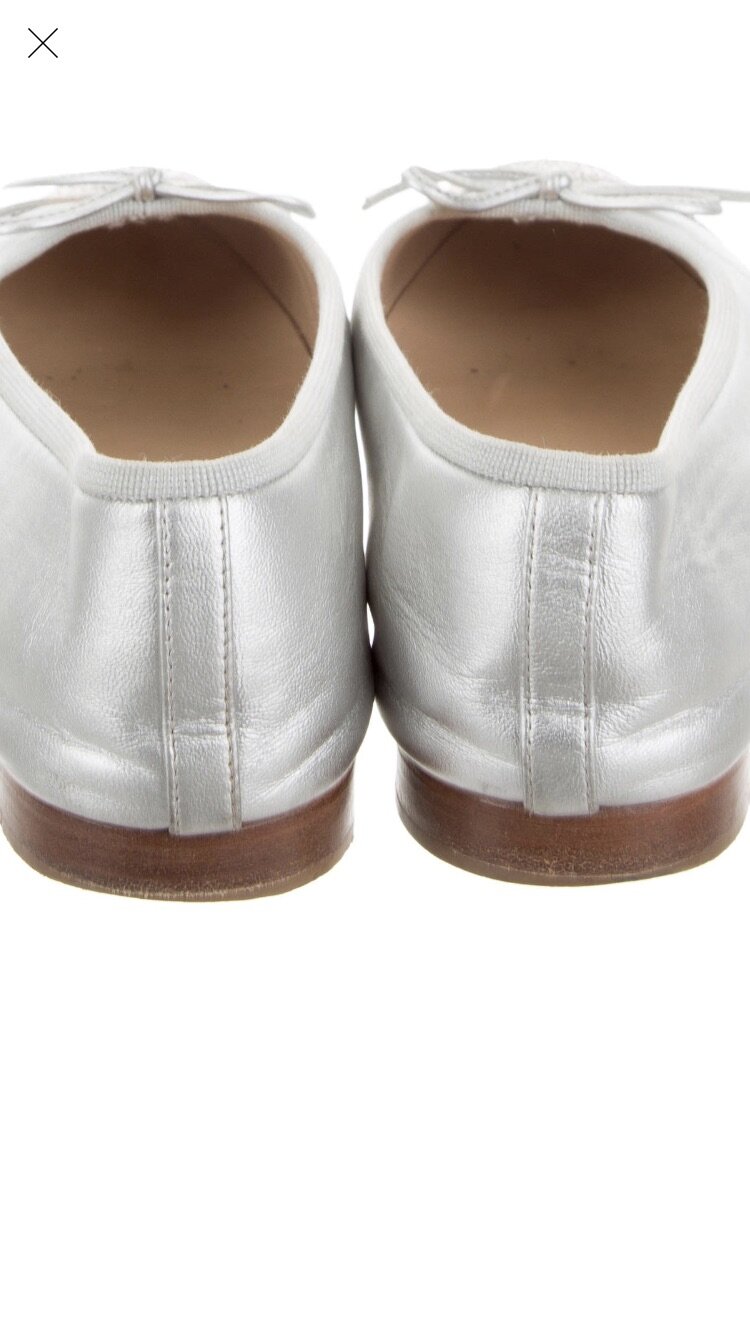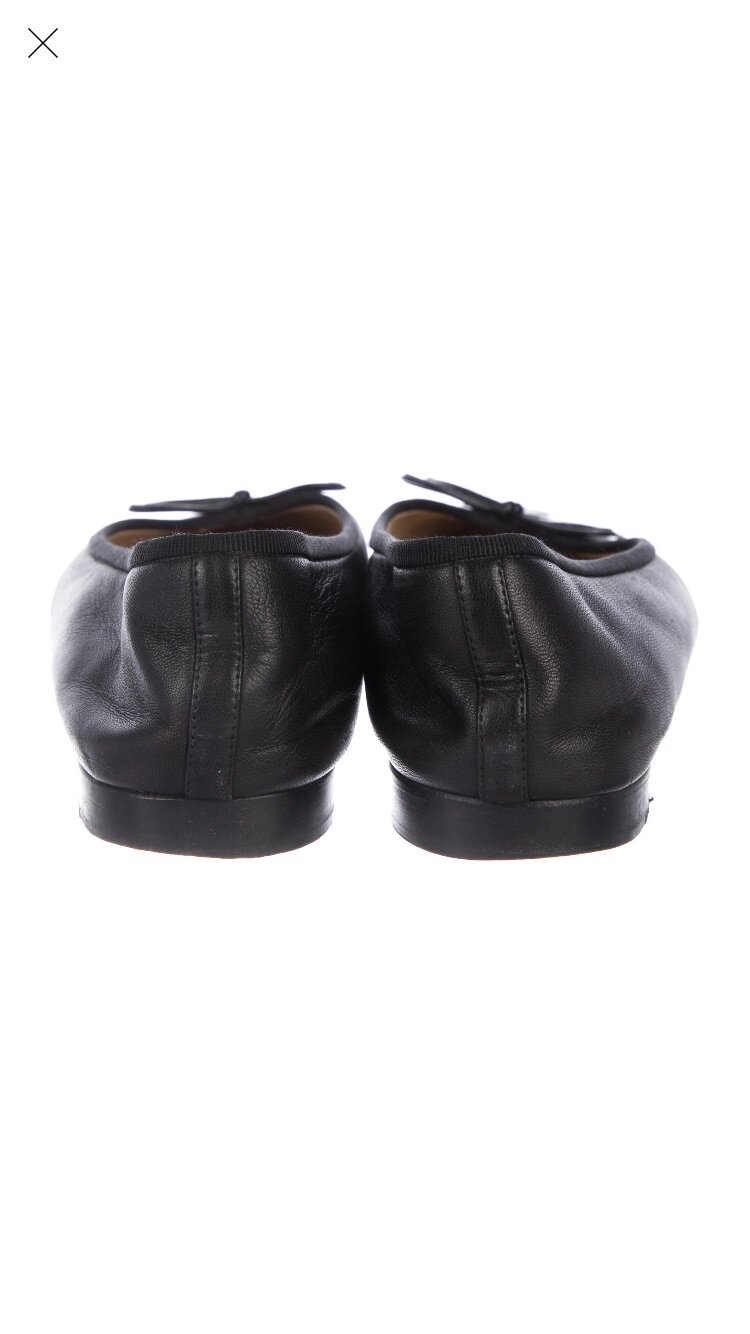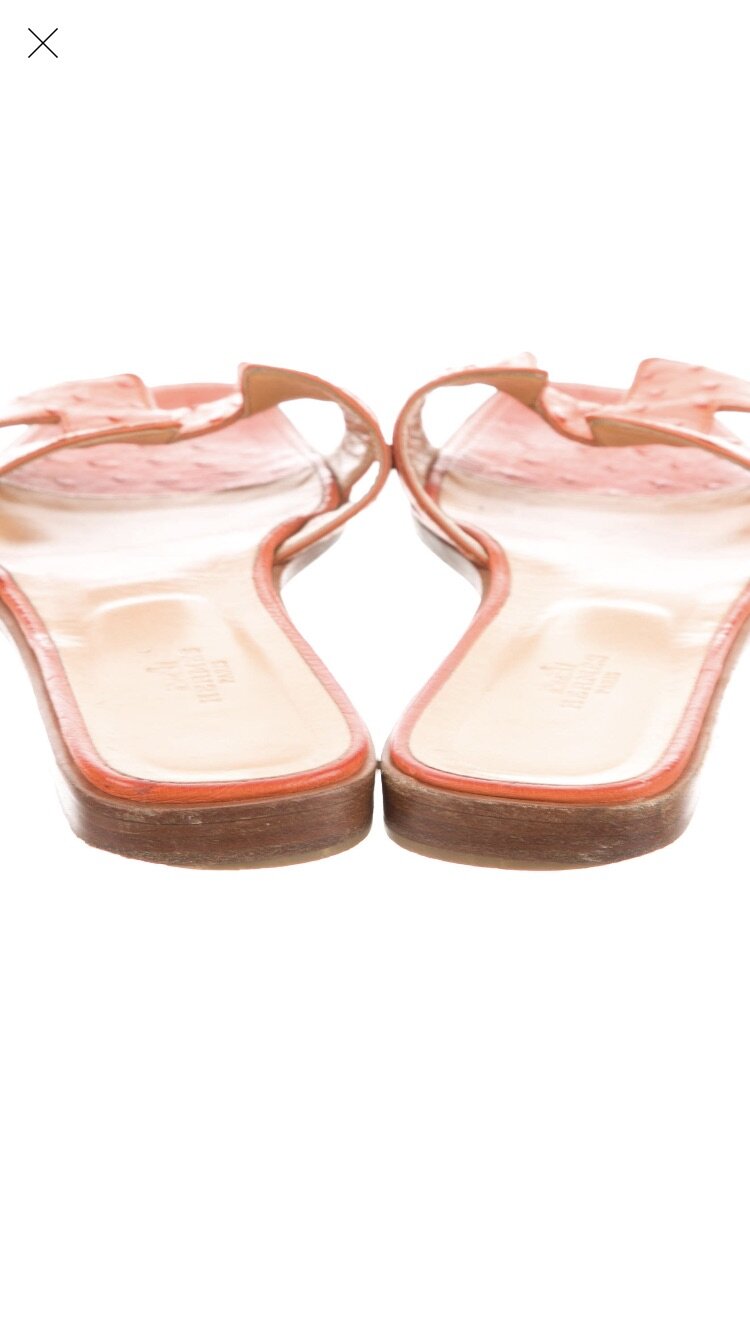Your Guide to Buying Second Hand Shoes
Most of the shoes that I purchased are lightly used consignment pieces. While I’m known for being a bit crazy about germs- including not letting anyone sit on my bed in “street clothes” and packing my shoes in dust bags when I travel- somehow, second hand shoes don’t really bother me. The way that I think about it is: I’d wear hand me down shoes from my mom or a friend, so how is it really any different? How do I gauge condition? Read below for my guide. For more shopping and consignment tips & tricks, be sure to subscribe to the Thrift & Tell Newsletter and follow @thriftandtell on Instagram.
TYPES OF SOLES
First, let’s discuss the type of sole. Typically, designer shoes have either a hard sole or a soft leather. The soft leather sole shows wear the minute it touches liquid or dirt. For that reason, many people think they’re more worn than they really are. I often find looking at the wear on the heel is a helpful way to continue to gauge the wear on a particular pair (more on that later).
Brand New
As you can guess, brand new shoes will look just like that. If they’re any soft leather soled shoe the sole will look like fresh, pristine suede. If they’re Louboutins they will be perfectly red with no marks or indentations. Note: shoes with soft, nude suede bottoms can even get light scuffs when tried on in store.
Like New
We have all been there. We fall in love with a pair of shoes and create a reason to wear them. “Tuesday night stiletto happy hour anyone?!” Inevitably, we discover that the shoes are too small, too big, too high, too narrow, too wide etc. and we cannot stand to wear them again. It is heartbreaking for the original buyer, but a win for the next owner. I would say most of my shoes that I buy fall into this category. The below represent shoes that look like they’ve either been worn around the house or worn once out. The heel on these types of shoes typically is almost perfect too.
Moderate Wear
There are a lot of shoes available in the second hand world that fit into this category. They’re shoes that have been worn several times but still have a lot of life left in them. The heels on these shoes may be slightly worn either outwards or inwards depending on how the original owner walked. These shoes often also have minor blemishes on the exterior.
Well loved (read: really, really worn!)
I really never buy really worn shoes. For me, I’d rather pay a bit more to get a more fresh pair of shoes. However, there are a lot of people who don’t mind taking the shoes for resoling and reheeling (keep in mind that cost $40-$60) . Just be sure you check with your local cobbler prior to buying them because some shoes are beyond repair. For example, metallic leather with scuffs cannot be buffed out.
RESOLED SHOES
Resoled shoes can be a bit of a mystery when it comes to determining wear. I know a lot of followers like to purchase resoled shoes to avoid having to pay for it to be done once purchased. However, it is a bit harder to assess the condition of resoled shoes than those without. If I’m assessing wear on a resole shoe, I often look to the portion that of the shoe that I can see between the ball of the foot and the heel. If that portion of the shoe only has a few marks or is pristine, it is safe to assume that the shoes had protective soles added on day one. If that portion is dirty you can often assume that the protective soles were added after wearing down the original sole.
HEELS
We all walk down our heels and depending on how we walk, the heel will wear down either on the inside or the outside of the shoe. The heel is often a great place to determine wear. If the shoe is worn down on the side almost to the wood portion of the heel, that is a well loved shoe!
For more shopping and consignment tips & tricks, be sure to subscribe to the Thrift & Tell Newsletter and follow @thriftandtell on Instagram.
LEARN MORE

